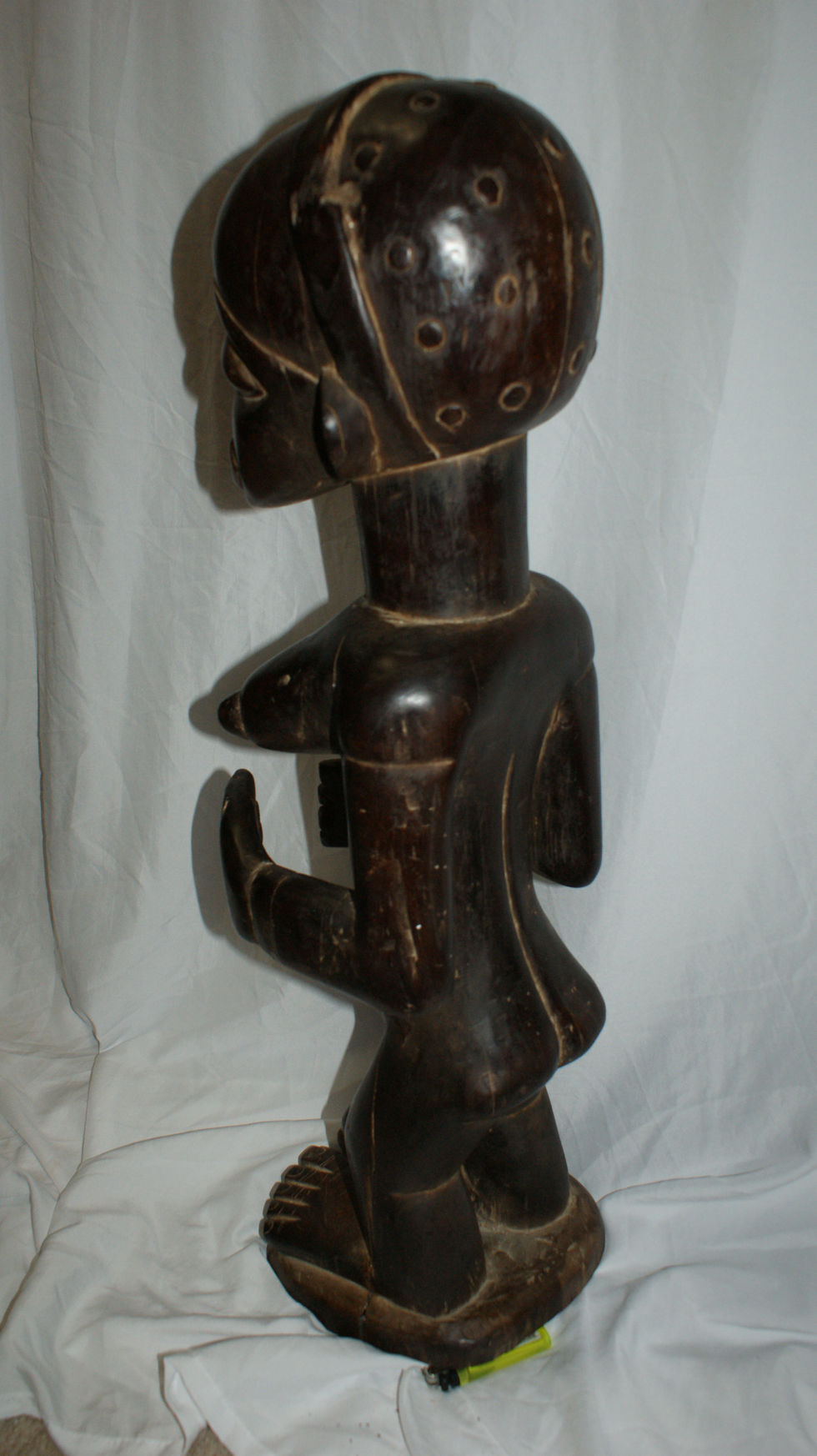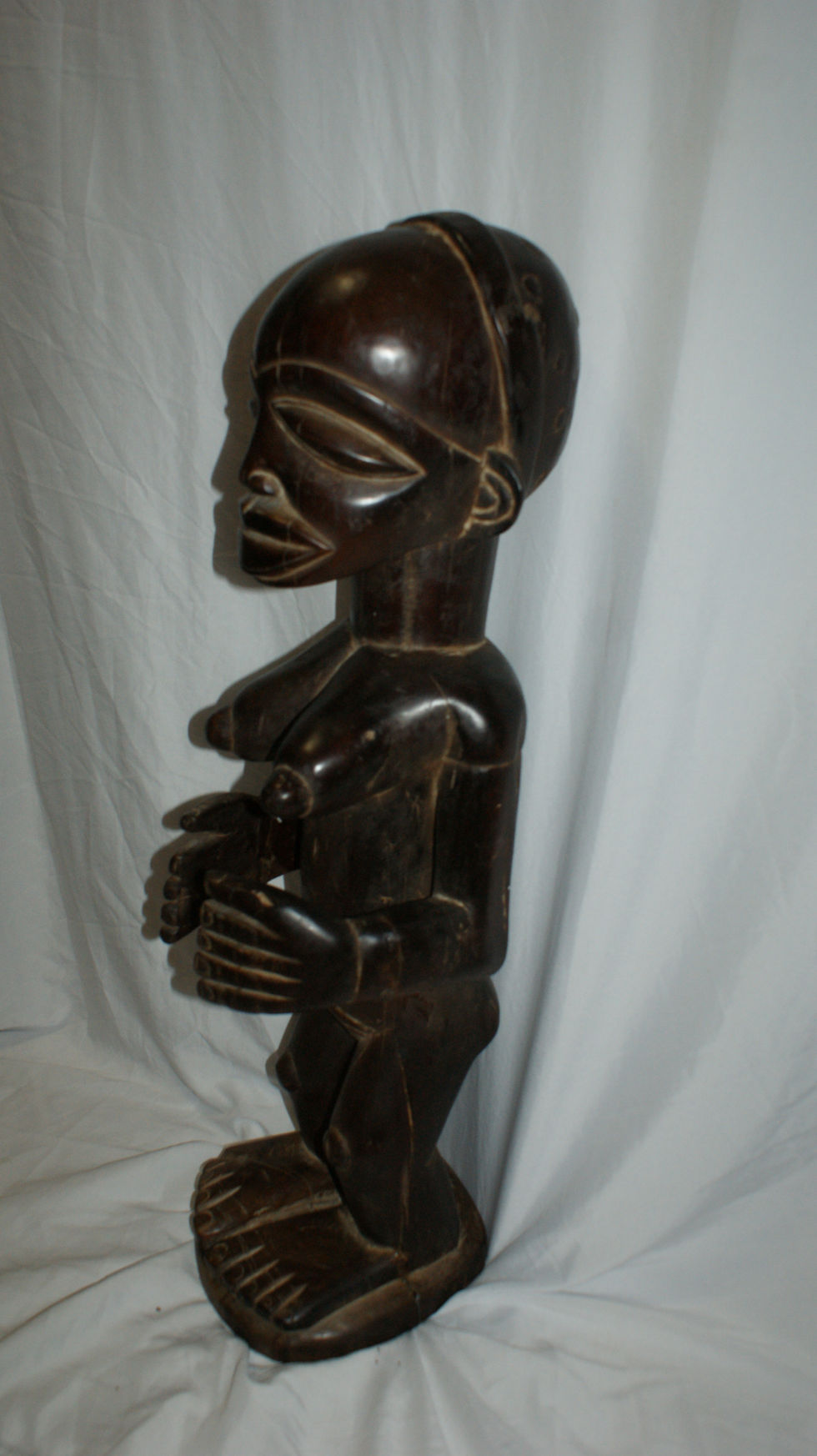W🌍RLD HISTORY
Create Your First Project
Start adding your projects to your portfolio. Click on "Manage Projects" to get started
Chokwe Female Statue
Project type
Statue
History
This statue originates from the Chokwe people, who are primarily located in their homeland of Uchokwe in Angola, and also extend into the Democratic Republic of Congo and Zambia. Chokwe sculpture experienced a "Golden Age" during the 18th and 19th centuries, during which these magnificent figures were created.
While the surviving body of Chokwe sculpture is small, it includes both major male figures, depicting the ancestral culture hero Chibinda Ilunga, and the rarer, equally impressive female figures. These female statues are considered the "essential female half of the primordial couple," suggesting their foundational role in Chokwe cosmology. They are among the most highly esteemed of all African figural sculptures and are iconic examples of African art.
Cultural Significance
Primordial Couple: The text explicitly states that female figures like this one formed the "essential female half of the primordial couple." This indicates their fundamental importance in Chokwe origin myths and the balance of creative forces.
Ancestral Representation: Like male figures depicting Chibinda Ilunga, female figures likely represent important female ancestors, culture heroes, or figures embodying ideal female qualities.
Balance and Duality: The emphasis on the "primordial couple" highlights the Chokwe understanding of balance between male and female principles as crucial for creation, fertility, and societal well-being.
Icons of African Art: The text identifies these figures as "among the most highly esteemed" and "icons of African art," underscoring their exceptional aesthetic and cultural value on a global scale.
Symbolism and Design
Chokwe female statues are renowned for their distinctive and elegant design elements:
Elaborate Coiffure: The figure features a meticulously carved, high, and intricate coiffure that sits like a crown on the head. This highly detailed hairstyle is characteristic of Chokwe art and often symbolizes beauty, status, maturity, and spiritual connection. It may represent the popular hairstyles of the time or embody specific cultural ideals.
Facial Features: The face is finely modeled with distinct features:
Prominent Forehead: Often high, signifying wisdom and intelligence.
"Coffee-bean" Eyes: These stylized eyes are deeply carved and often appear half-closed, conveying a sense of serenity, inner contemplation, or spiritual presence.
Broad Nose and Full Lips: These features are often rendered with a sense of naturalism and expressiveness.
Body Proportions: The figure typically has a relatively large head in proportion to the body, common in many African sculptural traditions to emphasize the spiritual or intellectual essence. The torso is often slender, leading to slightly bent legs.
Hands: The hands are often large and stylized, sometimes resting on the abdomen or holding a gesture that implies support or protection, or as seen here, perhaps in a gesture of contemplation or receptivity.
Breasts: The full, pendulous breasts clearly denote the figure's femininity and symbolize fertility, motherhood, and the capacity to nurture and sustain life.
Scarification: While not explicitly detailed for this specific image, Chokwe figures often feature intricate scarification patterns on the body, particularly the abdomen and chest. These patterns are not merely decorative but signify beauty, ethnic identity, initiation, and social status.
Posture: The slightly bent knees and upright stance give the figure a sense of readiness and groundedness, while maintaining an air of dignity.
Patina: The dark, rich patina of the wood results from age and the application of oils during ritual care, enhancing the figure's visual depth and spiritual presence.





